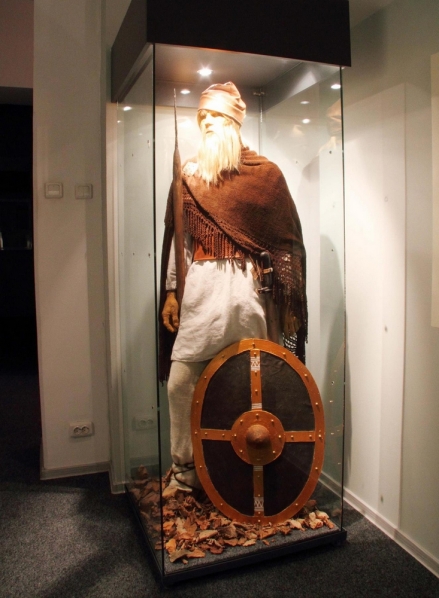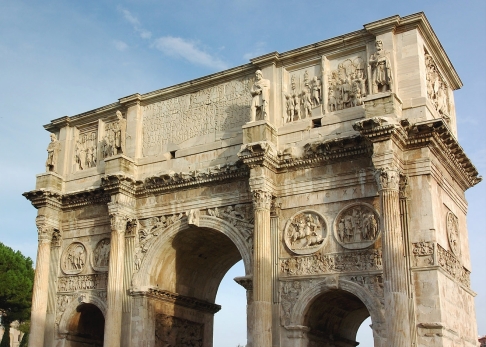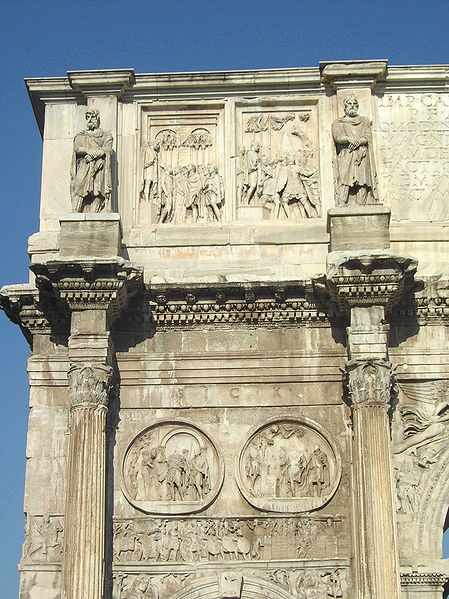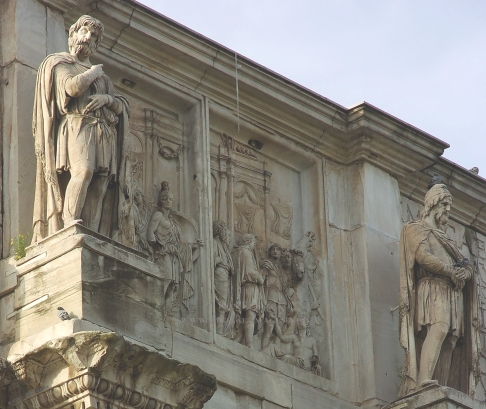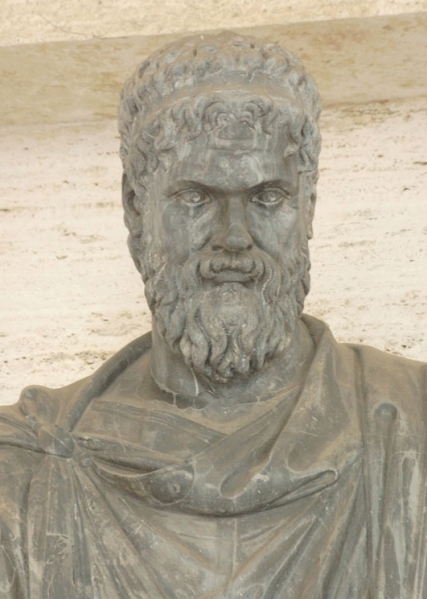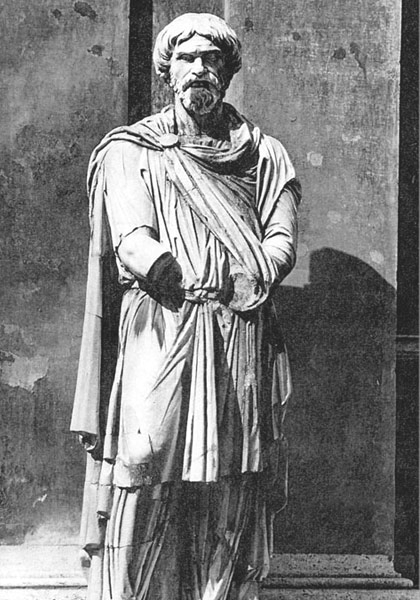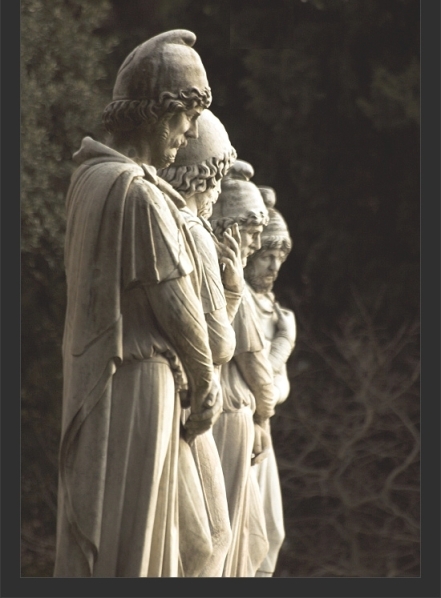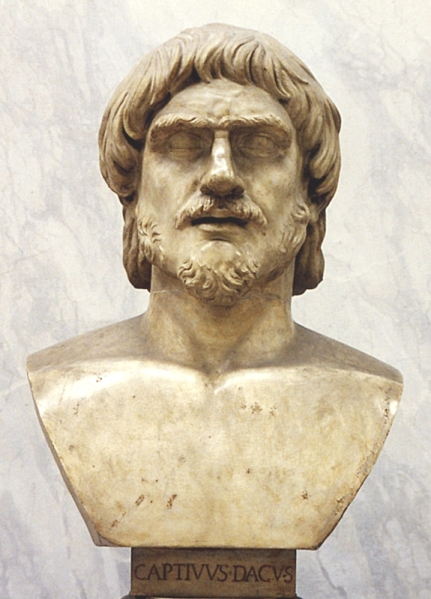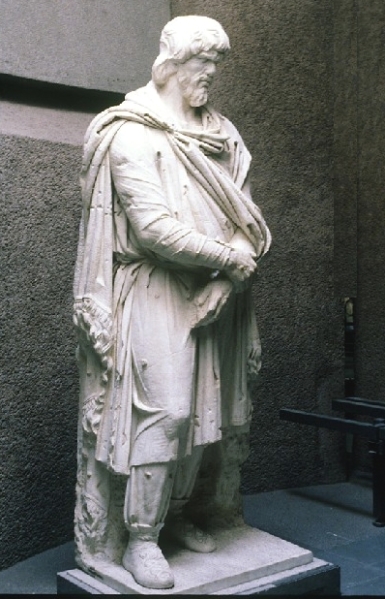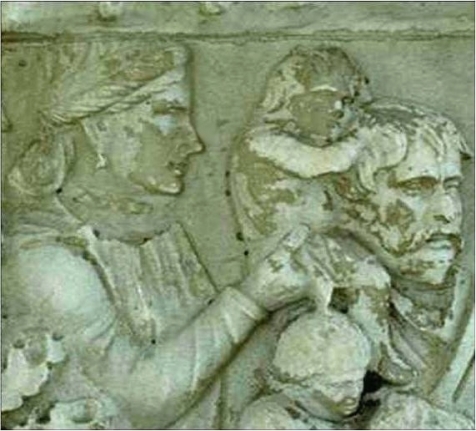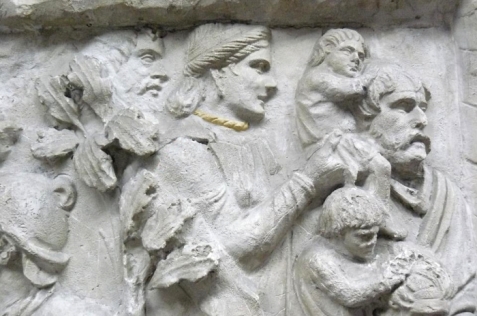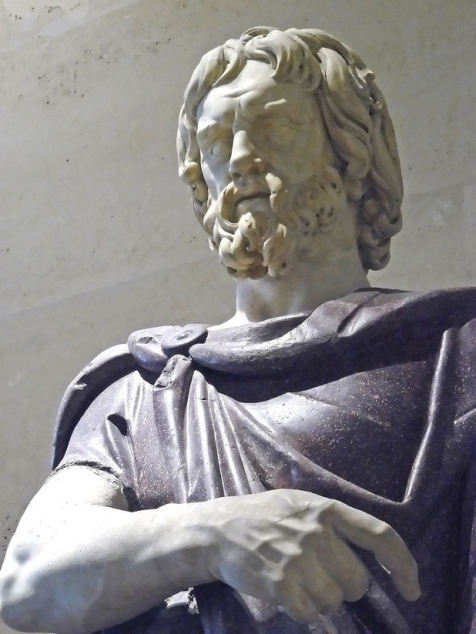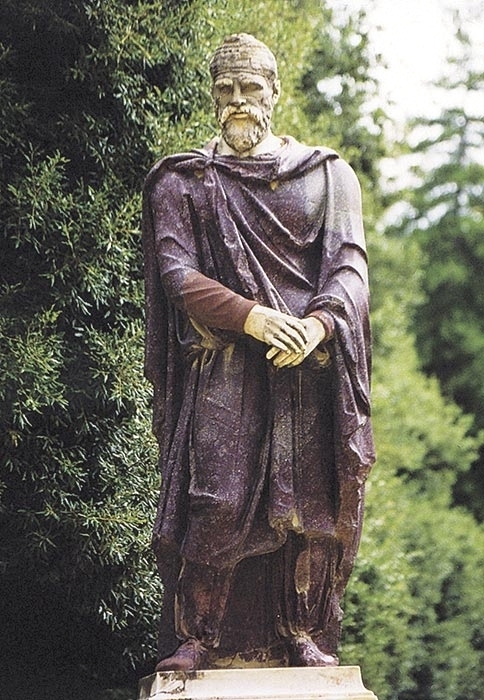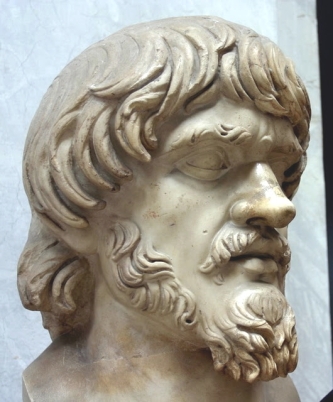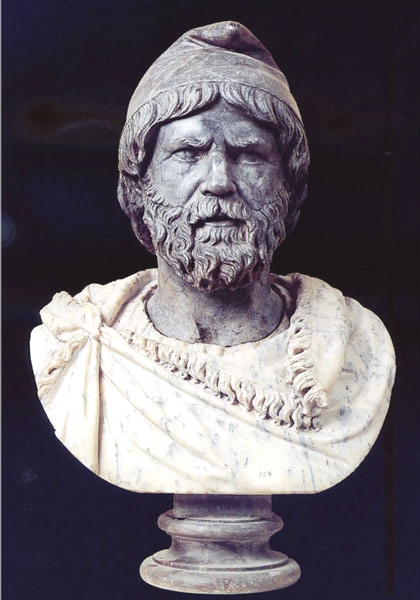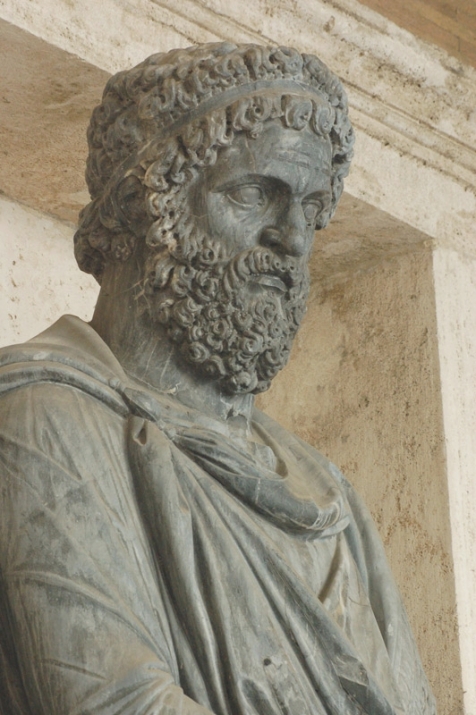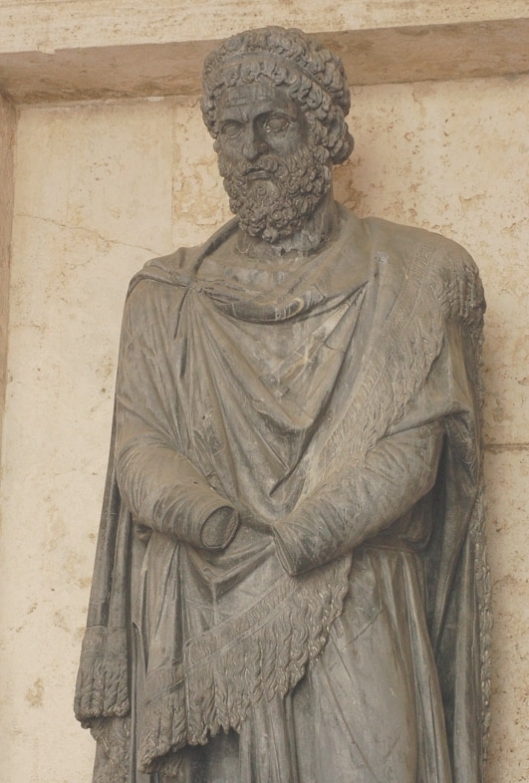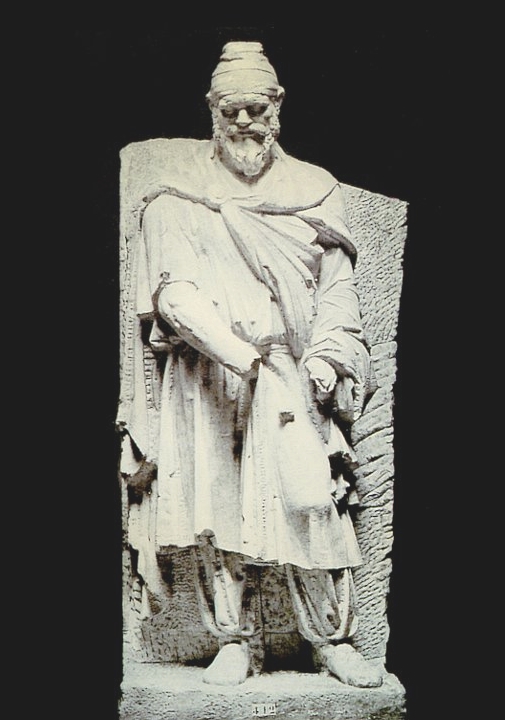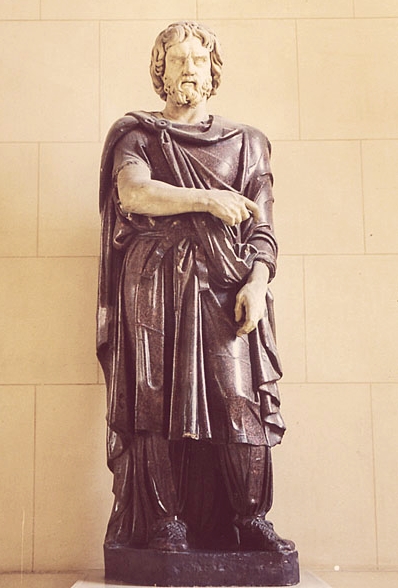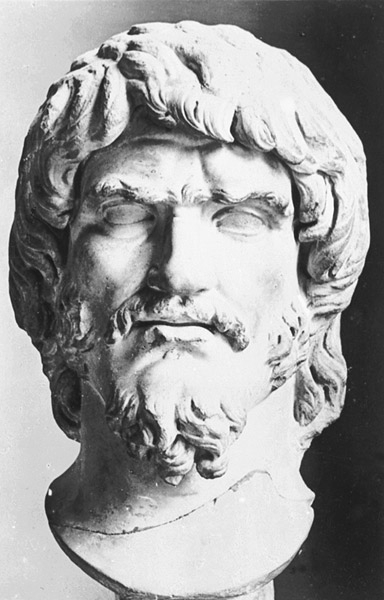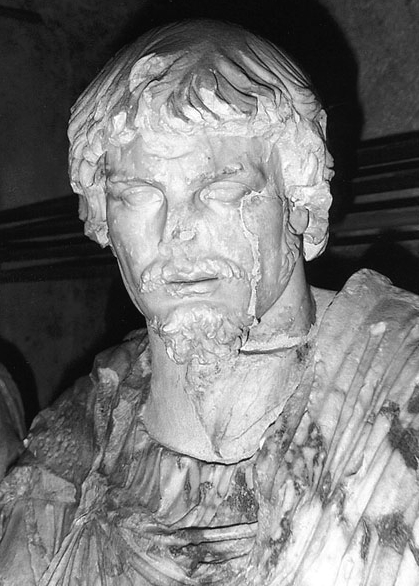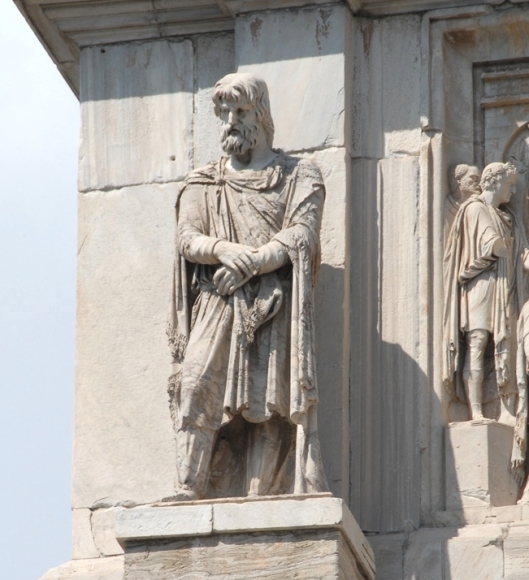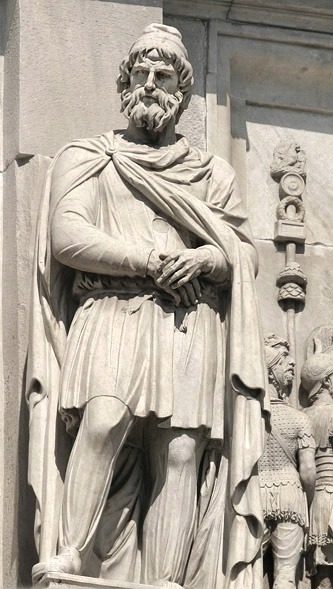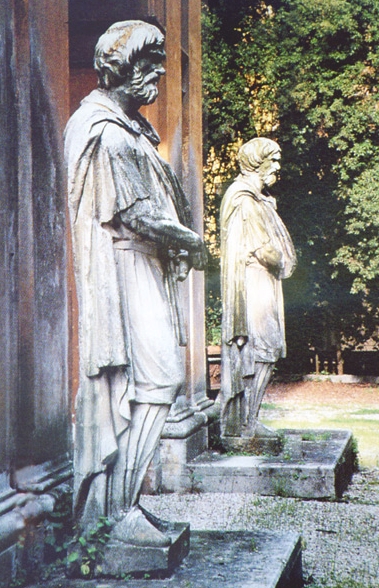Dacian in traditional attire – Batca Doamnei museum
Thracians – “the second-most numerous people after the Indians”(herodotus, 5th century BC)
Getae-Dacians belonged to the big Thracian family from South-Eastern Europe
Short history
In the 3rd-4rd century BC, Greeks mentioned the Getae living beyond the Danube river in today’s Vallachia and described them as “bravest and most righteous” among the Thracians. The Romans refereed to “North-Thracians” living in today’s Transylvania as Dacians. In 1st century BC, king Burebista unified all the Thracians living north of Danube under a single state.
The Romans conquered the Dacians after two military campaigns in 101 AD and 105 AD.
The first campaign ended in failure, due to the Romans underestimating the Dacian military. A peace agreement was reached by both sides. In the meantime, Trajan built a bridge over the Danube from Moesia (bridge which became the longest bridge in the world for more than 1000 years), which was to be used to carry large Roman troops for another well-prepared invasion 3 years later.

Roman propaganda stated that the second war campaign was “punitive” for supposed violations of the peace treaty through Dacians raids into neighboring Moesia.
The reasoning behind the effort put into the second campaign was in fact economic. The Roman empire was collapsing and the gold from the Dacian mountains was the answer. In 105, the Dacians were taken by surprise by sudden Roman attacks and although at first they repelled the attacks, they were eventually overcome.
After the win, Trajan announced 123 days of celebrations throughout the Empire. Dacia’s rich gold mines were secured and it is estimated that Dacia then contributed 700 million Denarii per annum to the Roman economy, providing finance for Rome’s future campaigns and assisting with the rapid expansion of Roman towns throughout Europe.The Dacian Wars marked the beginning of a period of sustained growth and relative peace in Rome.
♦
The Romans created dozens of statues of Getae-Dacians (the ancient people of present-day Romania), which can be found in museums all across the world. The statues were made on Dacian captives from the Roman empire, detail which can be observed from their stance and from the “Captivus Dacus” written on bust statues.
One of the busts is believed to be of King Decebal, the last Dacian king who fought the Roman wars and who chose suicide at the end (rather than surrender). His head was brought to Rome as a war trophy.
Although books on the Getae-Dacians have been written since the 1700’s (Dimitrie Cantemir, Gheorghe Sincai, Petru Maior), their history remained ignored. Petru Maior’s book was censored and his works on the subject forbidden in Transylvania (under Austro-Hungarian rule at the time) (source).
 Bust believed to belong to King Decebal. It was placed inside Trajan’s Column along with other busts which carried “Captivus Dacus” writing.Trajan’s Column is a monumental spiral which depicts the Dacian wars.
Bust believed to belong to King Decebal. It was placed inside Trajan’s Column along with other busts which carried “Captivus Dacus” writing.Trajan’s Column is a monumental spiral which depicts the Dacian wars.
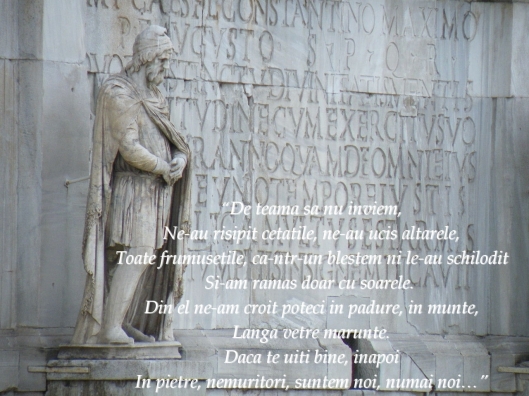 “For fear of our resurrection / They ruined our cities, they destroyed our altars, / All our beauties gone like a curse, they crippled us/ And we were left only with the sunlight/ With it we made paths through the forests, in the mountains, / Near small hearths. / If you look back, in every stone, immortal
“For fear of our resurrection / They ruined our cities, they destroyed our altars, / All our beauties gone like a curse, they crippled us/ And we were left only with the sunlight/ With it we made paths through the forests, in the mountains, / Near small hearths. / If you look back, in every stone, immortal
You’ll see us, only us … “
Sursa: romaniadacia
